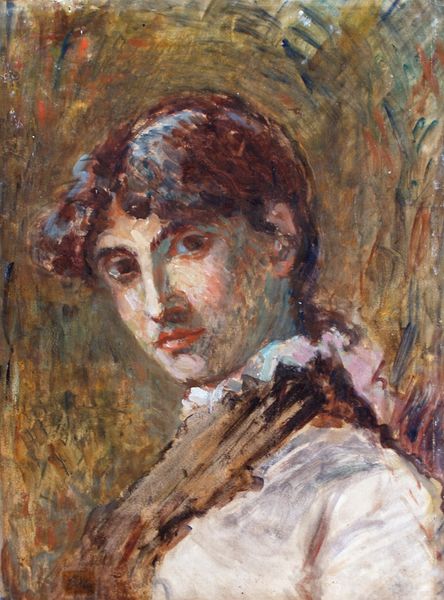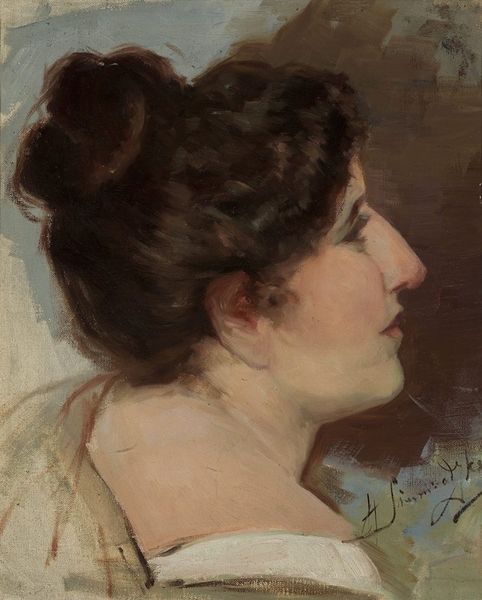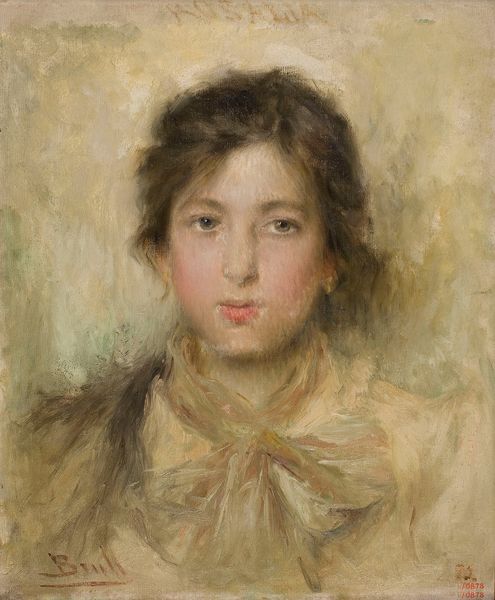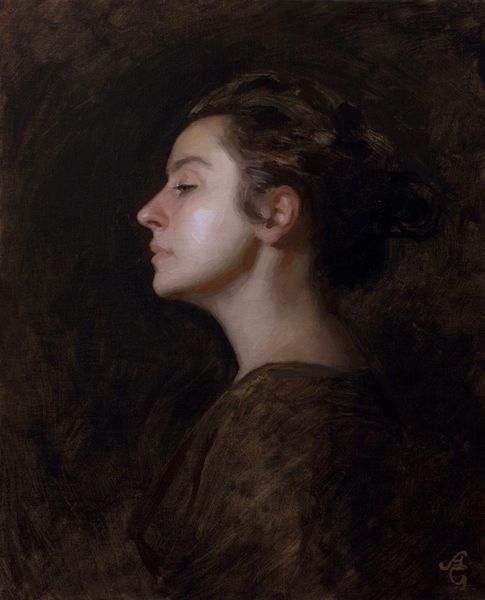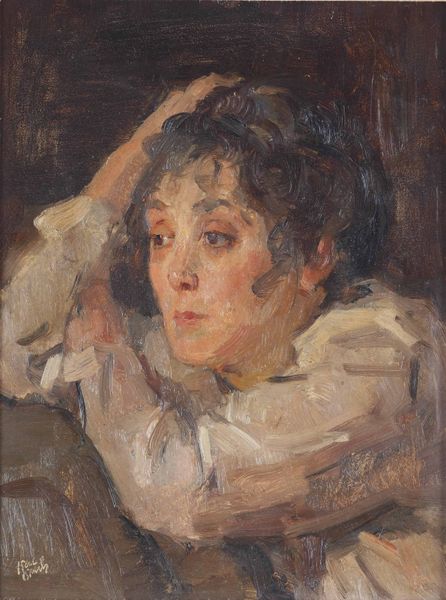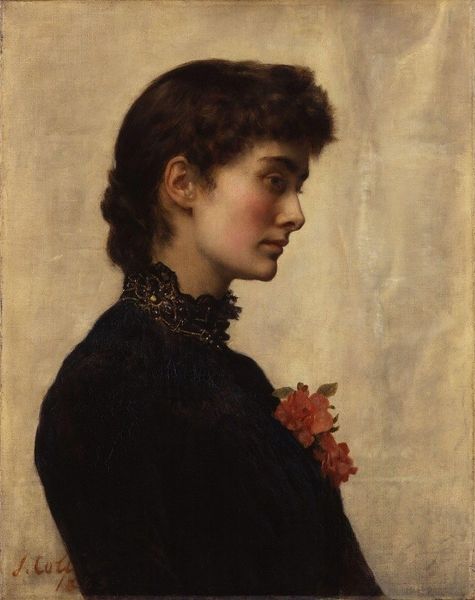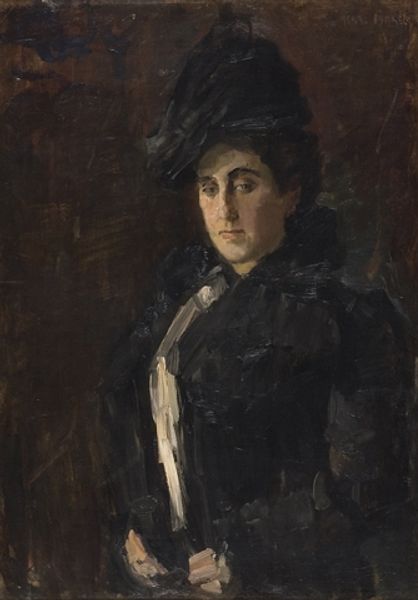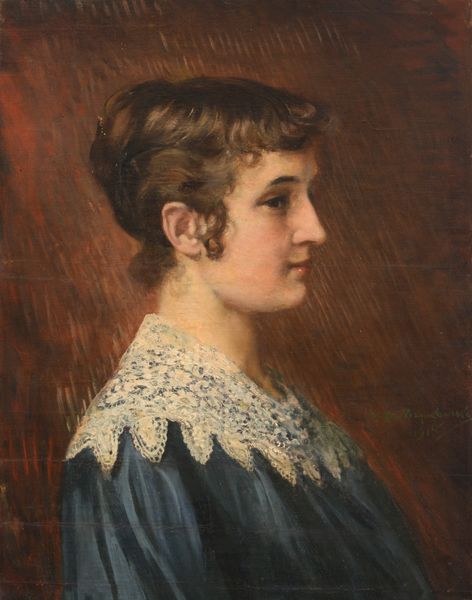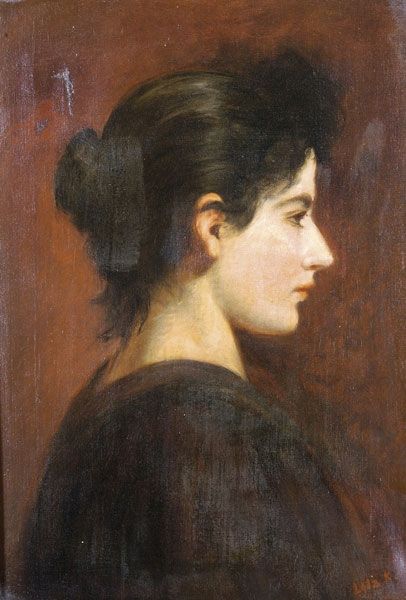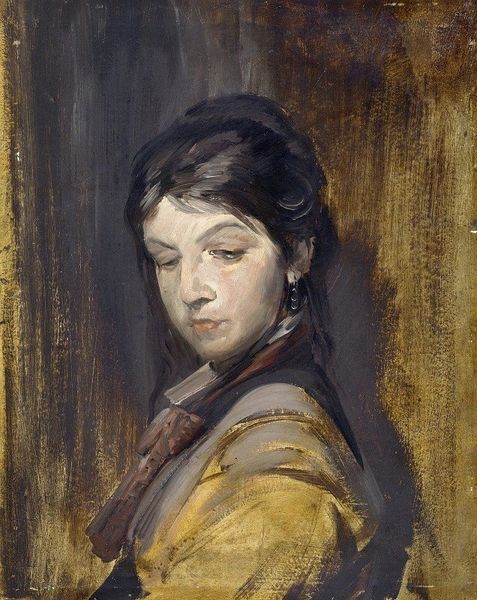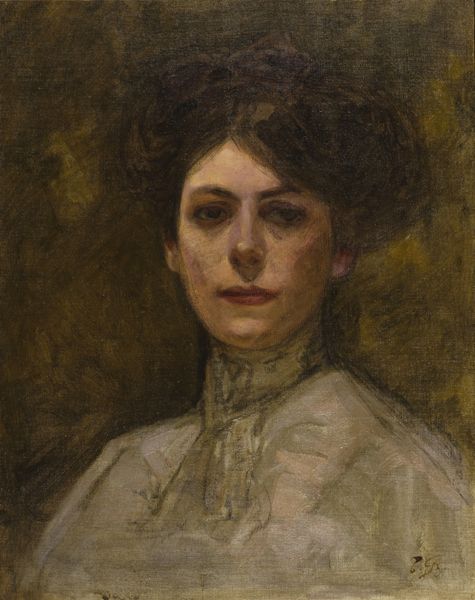
painting, oil-paint
#
portrait
#
painting
#
impressionism
#
oil-paint
#
oil painting
#
portrait drawing
#
portrait art
#
realism
Copyright: Public domain
Editor: This is Eugène Burnand’s portrait of "Julia Burnand," painted in 1889 using oil paints. The somber tone, the muted color palette… I’m struck by how withdrawn she appears. What do you make of it? Curator: Initially, consider the composition. Burnand utilizes a profile perspective, which, while common in portraiture, here directs our focus onto the interplay of lines - observe the elegant curve from her forehead to her chin, echoed, albeit in a less sharp manner, by the ruffles of her garment. Editor: It’s like a study in soft curves against sharper angles, isn’t it? Curator: Precisely. Note the contrast between the smooth planes of her face and the textured impasto of the dress. What does that signify? Editor: Perhaps a tension between inner composure and external display? Curator: A viable reading. Now, turn your attention to the application of paint itself. Impressionistic strokes suggest rather than delineate, dissolving form into light and shadow. This affects how we interpret Julia; she becomes less an individual and more a study in form and perception. Does the title, naming her directly, disrupt that? Editor: It feels intentional, a reminder of the person behind the impressionistic technique. Maybe the tension lies between objectivity and subjectivity? Curator: Indeed. The formal elements are in direct conversation with representational goals, and complicate readings of either her emotional state or social status. What are your lasting thoughts? Editor: I’m left pondering the relationship between technique and subject, and how that interplay informs the viewing experience. Curator: An excellent synthesis of the artistic language being used and how that generates potential readings of the sitter.
Comments
No comments
Be the first to comment and join the conversation on the ultimate creative platform.

